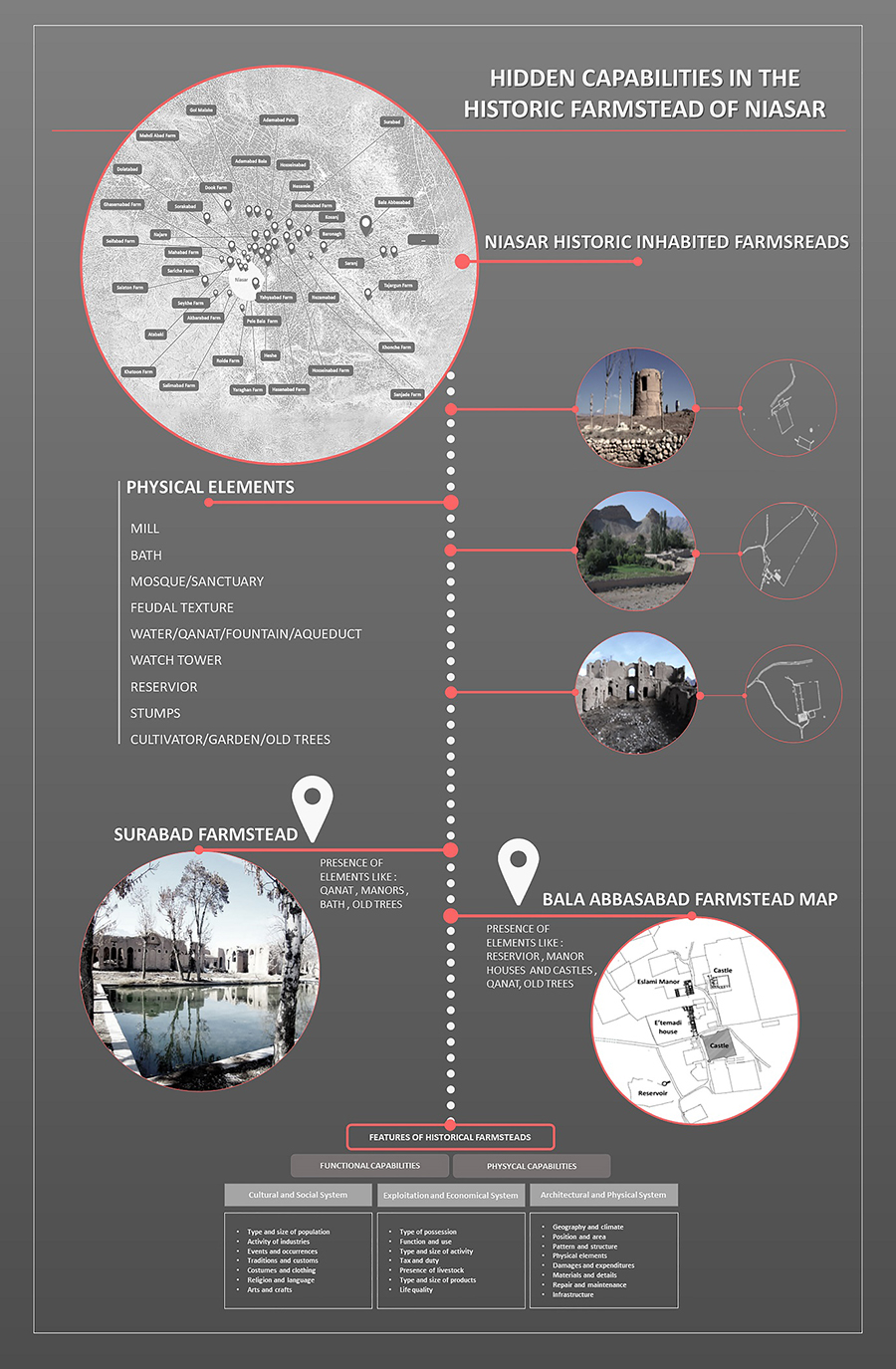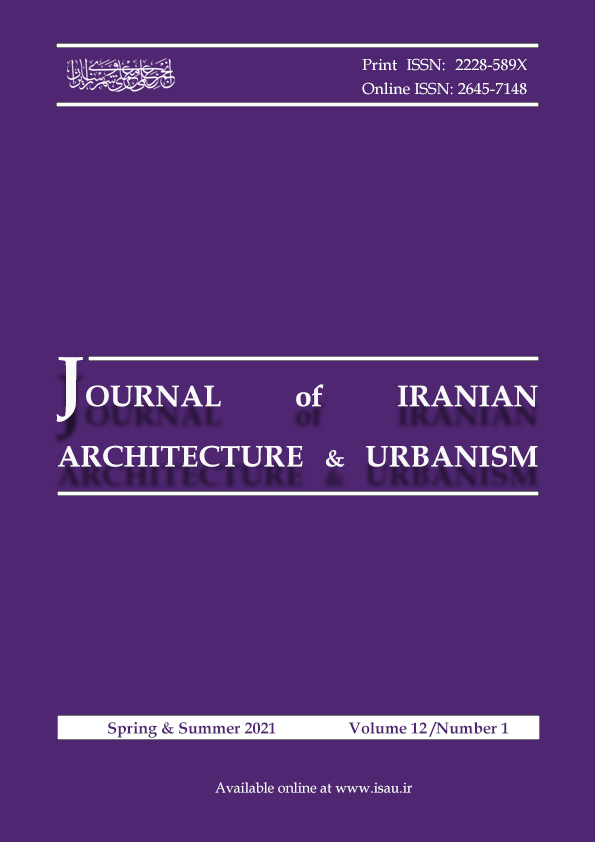Document Type : Original Research Paper
Author
Assistant Professor, School of Architecture and Environmental Design, Iran University of Science and Technology, Tehran, Iran .
Abstract
Extended Abstract
Background and Objectives: Based on historical geography and documents of the Qajar era in the geographical zone of Niasar, the built biological complexes significantly affected the living and ecology and created a special economic and social culture on their scale. Due to fixed and floating population and defensive, religious, service, and physical components and the existence of water sources and rural properties, these farmsteads were known as residential ones and survived until the end of the first Pahlavi era. Residential farmsteads have played a pivotal role in the natural and living system of Iran central plateau and the management of the provincial affairs of various governments in Iran. Owning or dedicating the farmsteads, most rulers and politicians took care of the economic affairs of their dominated areas, employed many workers and peasants, and developed their sociopolitical influence realm. Many historical residential farmsteads are now ruining, or their use has been changed. The duration of this process will ruin any documents in the field of architectural, cultural, social, economic, and administrative systems. Numerous factors have been influential in their destruction. Continuous developments and instability of economic and political affairs of the country in a wide time range and feudalism and land reformations in the contemporary era and climatic and environmental variables are considered the most important factors of farmstead destruction.
Methods: This study aims to understand the historical residential farmsteads of Niasar through their features. It tries to interpret and read the written documents and survey materialistic monuments through an “underlying theory” and historical-interpretational approach. On this basis and as the case study, most of Niasar farmsteads were identified through field studies, attitude assessment, and document research. First, the location of 27 farmsteads was identified and mapped in required scales through field surveys and the aerial images within a 15-kilometer radius of Niasar Cultural Center. Following that, the qualities of farmstead formation were investigated based on written documents and references such as Zarabi, 1956; Ghomi, 2006, and the studies of Niasar Cultural Heritage Base specifically. The whole information was investigated through qualitative questionnaires and interviewing the stakeholders of physical, cultural, social, and economic fields. Within the process, some of the residential farmsteads of Niasar were found again and adapted with historical documents. Therefore, two specific species were recognized; rural property castles and rural property complexes, and their capabilities and their three-fold systems were identified.
Findings: Two questions are queried in this paper; firstly, the “hidden capability” concept will be scrutinized, and next, different types of hidden capabilities in historical farmsteads of Niasar will be investigated. Niasar farmsteads have been investigated as the smallest biological complex in Rostagh village in Kashan for responding to the research questions. In order to identify their features, the qualities of the location, formation periods, shapes, water, and rural property and service, religious, residential constructions have been mentioned. The related findings to the ownership, exploitation specifications, and economic, living, social, and population coordinates have also been investigated. In Table 2, all such features introduced a part of hidden capabilities and deployed systems in residential farmsteads of Niasar. Physical, architectural, economic, cultural, and social systems in two functional and physical forms are some of the capabilities hidden in the farmsteads and have been revealed in the study process after some decades.
Conclusion: Historical residential farmsteads of Niasar have lost their identity, and their mentioned capabilities have remained unknown. They are being ruined due to massive immigration of natives, the replacement of non-natives, and urban or rural unbalanced development. According to the current paper, investigating the concepts of historical residential farmsteads as infill cultural and economical packages is suitable. This paper considers the vitality and conversion of farmsteads to “living areas” instead of recognizing them as absolute historical areas to move toward achieving sustainability in farmsteads. Therefore, it suggests that all components of a farmstead should be prepared in the form of a coherent whole entitled “Historical Farmstead” to be inscribed on the National Monuments List. Meanwhile, awareness and legal support and the hidden protection capabilities can contribute to the sustainability of historical farmsteads in Iran. Historical residential farmsteads shall approach their historical role in protecting living and biological systems of cultural and natural heritage groups. It will not be realized unless they are identified qualitatively and quantitatively, and their existence and effect are recognized in different affairs of the country throughout history.
Graphical Abstract
Highlights
Keywords


